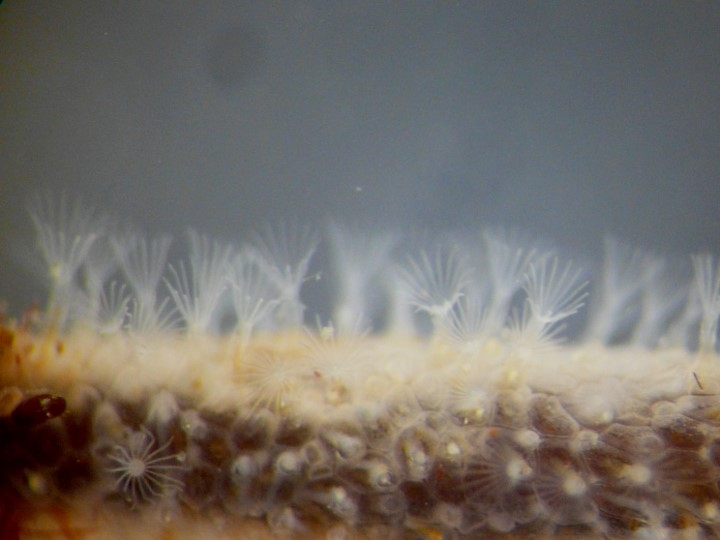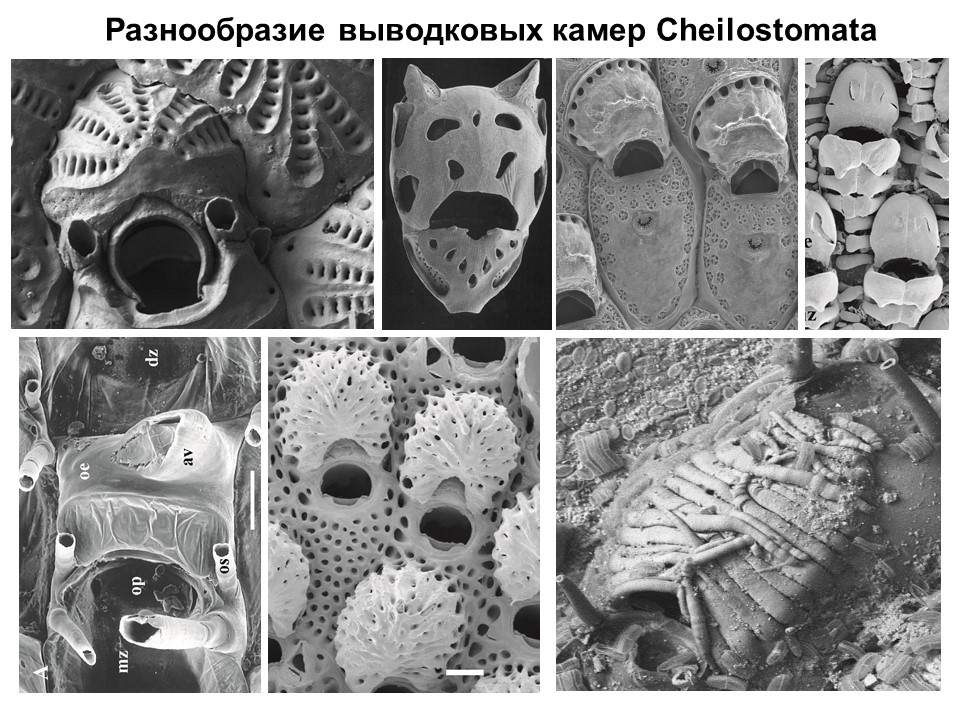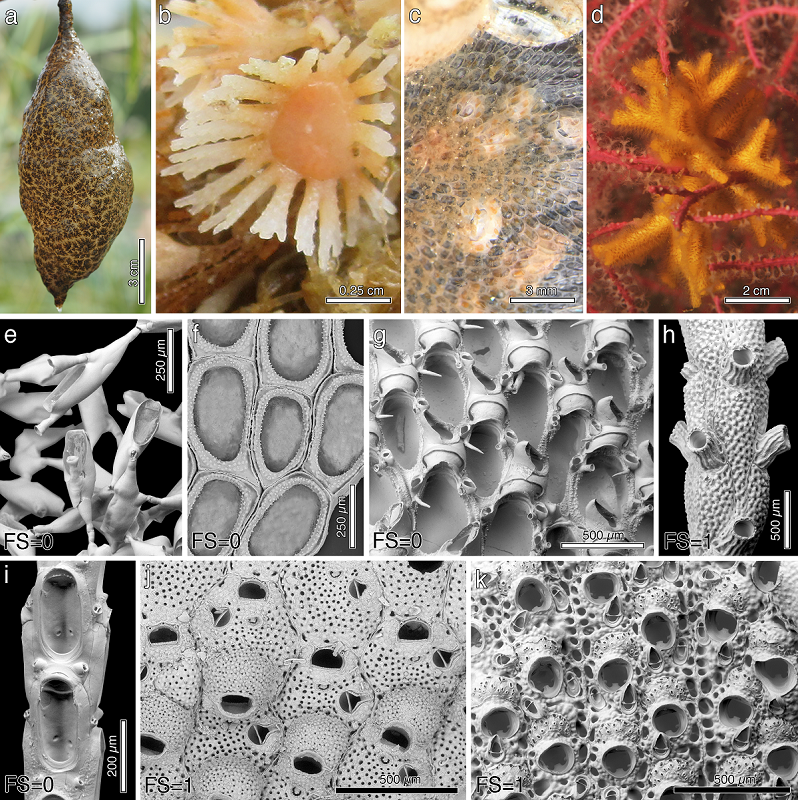Researchers from St Petersburg University helped to create the most complete phylogenetic tree of bryozoans
As part of an international research group, the University biologists have taken part in analysing over 500 species of marine bryozoans (filter-feeding invertebrates, phylum Bryozoa). This research resulted in the most complete phylogenetic tree of this taxon up to now. It was determined that one of the bryozoan clades had originated 200 million years prior than previously estimated. Details of the research were published in the Science Advances.

Bryozoans are colonial invertebrates wide-spread in marine and fresh water ecosystems. These ancient organisms appeared in the oceans of our planet at least at the beginning of the Cambrian. In the course of time, they have inhabited various depths from the intertidal to the abyss, adapted to different salinity and even invided freshwater. Bryozoans can live on solid substrates like stones and rocks as well as on soft ones like sand and silt. Additionally, they can settle on different living objects including sea weed, molluscs, crabs, sea snakes, and turtles. Some bryozoans can drill holes in calcareous shells of molluscs forming colonies inside.
The article was published during the year of celebrating the 200th anniversary of zoology at St Petersburg University.
Similar to the well-known corals, Bryozoa are characterised by various forms of colonies: encrusting and erect, solid and branching, fenestrate and even spiral. Every colony consists of multiple zooids with a crown of ciliated tentacles.

Zooids are connected to each other structurally and physiologically, which makes a colony a highly integrated living system. Bryozoans serve as model organisms to study a wide range of issues including evolutionary processes.
For the first time, bryozoans were discovered and described approximately 300 years ago. They looked like moss to the researchers of that time, so they called them “moss” animals.
Andrew Ostrovsky, Doctor of Biology, Professor in the Department of Invertebrate Zoology at St Petersburg University
Andrew Ostrovsky together with Olga Kotenko, Assistant Lecturer in the Department of Invertebrate Zoology, and Natalia Shunatova, Associate Professor in the same department at St Petersburg University, are a part of a large international research team of 34 researchers from 17 countries. The researchers managed to build the most complete phylogenetic tree of bryozoans (Bryozoa type) ever made. The project continued for almost eight years.
Previously, researchers relied mostly on morphological data to solve problems of phylogeny. Currently, they also use molecular markers. According to Andrew Ostrovsky, the research team was able to obtain an accurate result due to the combined analysis. In doing so, the researchers used 15 mitochondrial and one nuclear gene of bryozoans. Based on these molecular sequences, they compared over 500 species of these animals. ‘We compared the obtained results with morphological data revealing a match of 70%. This is truly a success’, said the researcher. ‘These findings allowed for the team to reconstruct the most complete phylogeny of Bryozoa embracing almost a quarter of the known genera of these animals. Certainly, this work will be continued. However, at the moment we have built a unique in size and accuracy phylogenetic tree that can serve as an important tool in evolutionary studies.’
Based on the branching of the phylogenetic tree, the researchers found that parental care was acquired at least five times in the course of bryozoan evolution. Andrew Ostrovsky made this conclusion a decade ago based on the morphological data. Today, it has been proved on the molecular level.
The majority of animals on our planet leave their off-springs to the mercy of fate. At the same time, the overwhelming majority of bryozoans are supportive parents. In the course of evolution, they developed various ways of incubating larva. Andrew Ostrovsky, Doctor of Biology, Professor in the Department of Invertebrate Zoology at St Petersburg University
‘In some cases, progeny develops inside the parent. In other cases, protective incubation chambers of different structure independently evolved. Moreover, some bryozoans acquired placental analogues providing an additional nutrition for embryos,’ noted the researcher. ‘It is possible that due to the parental care after off-spring, bryozoans got certain evolutionary advantages, which enabled them to become a very successful group of organisms in the historic perspective.’

The researchers combined phylogenetic analysis with calibration based on fossil data. ‘Fossil remains of the many analysed species were available. We knew the time when the key traits appeared in evolution, so we compared the data from the fossil records with molecular data. Simultaneously, we used molecular clock – a model that helps to determine the rate of evolution. As a result, we could get an idea when large clades of bryozoans, for example, orders, originated,’ said Andrew Ostrovsky.
The researchers found out that one of the largest bryozoan groups – the order Cheilostomata – has evolved approximately 200 million years prior to the existing estimates: not at the end of the Jurassic period (160-150 million years ago), but in the Carboniferous period (345 million years ago).
‘Molecular clock helps to determine the period when a certain group of animals originated using information coded in the DNA of its modern representatives. According to our data, the first Cheilostomata had appeared two hundred million years prior to the existing estimates. However, no palaeontological proof has been found yet. I’d like to think that fossil remains of these organisms have simply not been found yet and there is certainly no guarantee that they will be found. The majority of ancient organisms, especially those devoid of solid skeletal structure, have completely disappeared from the fossil records. Such groups that supposedly existed, but left no ancient remains as of today, are sometimes called ghost-groups,’ explained Professor Ostrovsky.

Thus, the researchers have made several important findings, while also raising new questions. For example, the obtained results demonstrate that the order Cheilostomata could originate and radiate already in the last third of Palaeozoic Era and in the first half of the Mesozoic. However, there are still no palaeontological evidence to it, which means that such hypothetical groups still remain ghost-lines for researchers. Moreover, it is still unclear why in 70% of cases morphological characteristics coincide with the molecular ones, while in 30% of cases not. These are the questions that the researchers will try to solve in the future.
The research project, that the University researchers took part in, completed in the year of the 200th anniversary of zoological education at St Petersburg University. It was in 1822 at the Imperial St Petersburg University that the first Department of zoology in Russia with a Cabinet of Zoology started their work. Later on, they gave rise to the Departments of Invertebrate Zoology, Vertebrate Zoology, Genetics, Entomology, Embryology, Hydrobiology and Ichthyology. During 200 years of zoological research at St Petersburg University, world famous research schools of ecological parasitology, protistology, evolutionary morphology, palaeontology, ornithology and other fields appeared. Today, zoologists of St Petersburg University continue their academic and research activity. Many of them are recognized among the world experts in their fields.

